Highlights from the Low Countries
I spent two and a half weeks in Belgium and the Netherlands over the holidays at the end of 2022. This region is historically known as the Low Countries due to their low elevation, and this is precisely the meaning of “Nederland,” the name of the Netherlands in Dutch. The two countries were once part of one kingdom, eventually splitting on religious lines, with Protestantism dominating in the North (the Netherlands) and Catholicism in the South (Belgium). I had just finished my first semester of grad school, which was preceded by my time with the freedom of flight benefits at Air Canada. I was therefore quite excited to get away for a little bit! Here are some highlights from my trip.
Cities Visited
My pace of travel tends to be quite fast. I generally stayed at one place for two or three nights, and explored one or two surrounding cities during each day.
Ireland: Malahide (while in transit)
Belgium: Kortrijk, Ieper, Brugge, Gent, Brussels, Antwerpen, Namur, Liège, Spa
Germany: Aachen
Netherlands: Maastricht, Amsterdam, Haarlem, Zandvoort, Utrecht, Groningen, Leeuwarden, Rotterdam, Delft, Den Haag
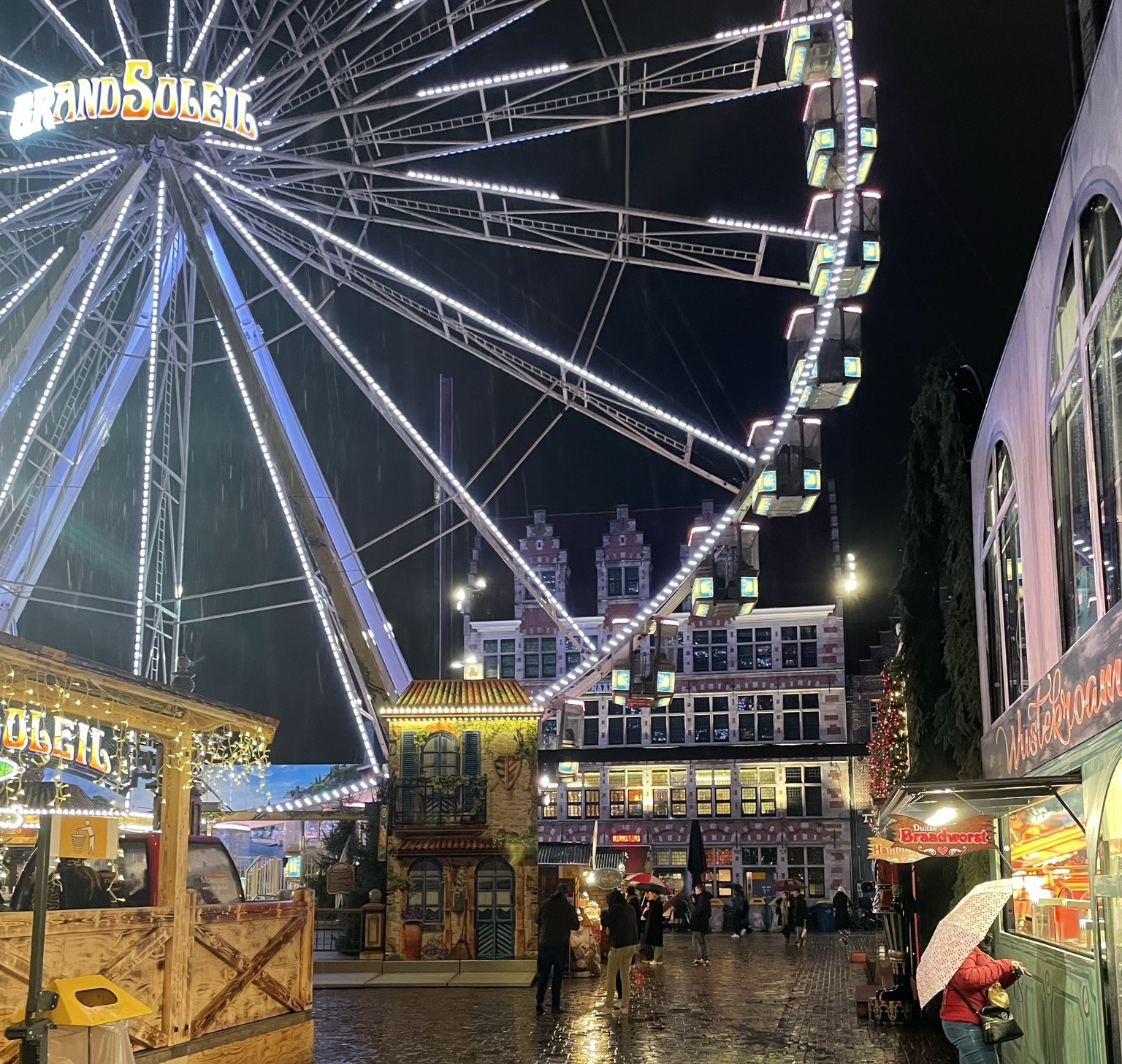 Christmas market, Gent
Christmas market, Gent
Christmas markets are probably the most unique experience to visiting Europe during the holidays. Often set in the central square of municipalities, you can find them from major cities to small towns. Vendors set up their stalls selling all sorts of food and drinks: waffles, pastries, sandwiches, oysters, sausages, baked potatoes, and mulled wine are just a few of the items you might see. There are also games, holiday decor, and often an ice skating rink. Though somewhat commercialized and occasionally overpriced, all the happy faces and holiday cheer made for a very festive atmosphere. Between families with young children, couples holding hands, and groups of friends bantering, a world of excitement comes alive.
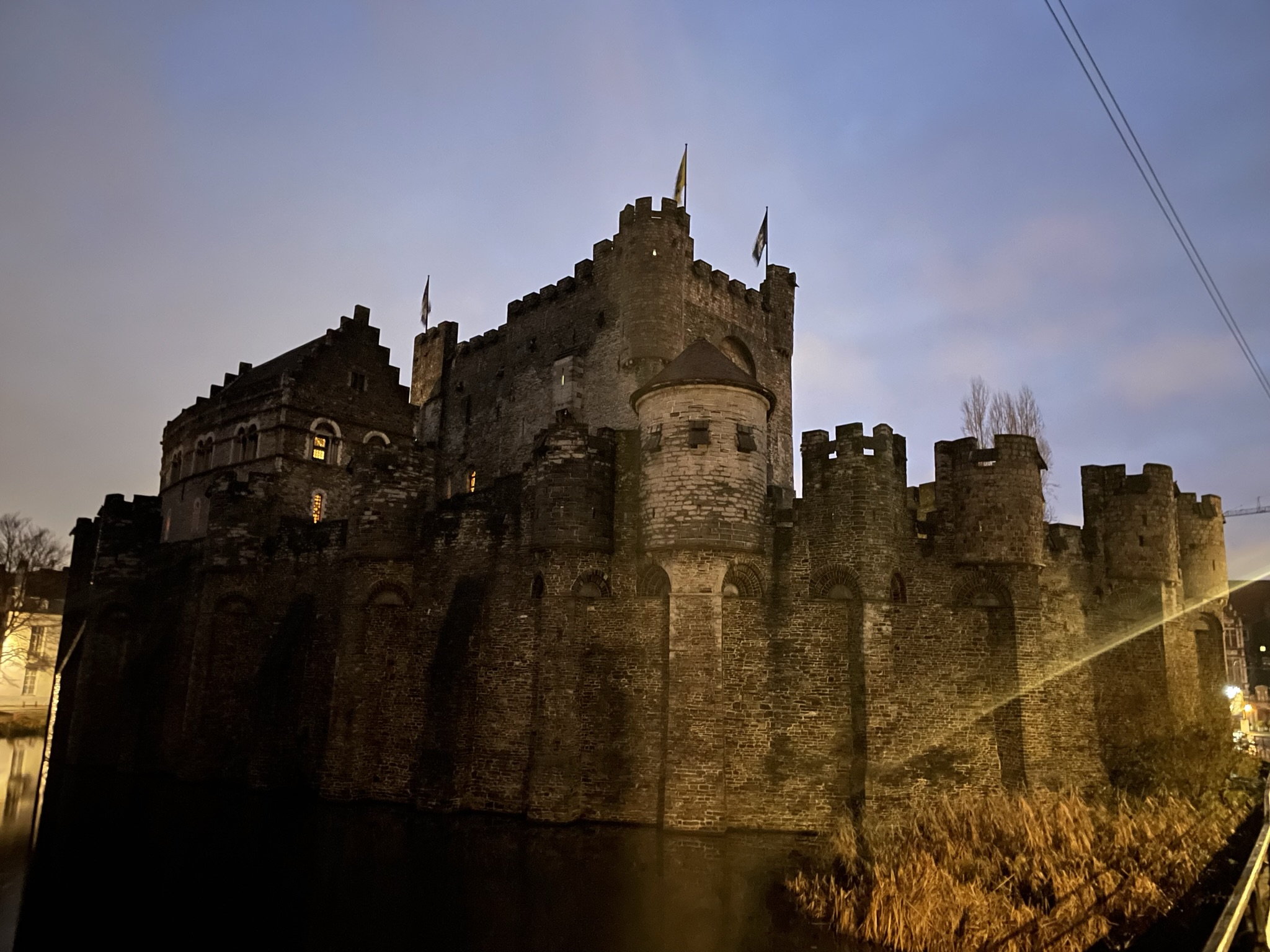 Gravensteen at dawn, Gent
Gravensteen at dawn, Gent
Medieval Europe evokes images of castles and knights, and this “Castle of the Counts” is certainly a representative example. Dating back to the twelvth century, the structure overlooked the prosperous trade centre of Ghent. The audio tour tells the story of Count Phillip, builder of the castle, and was narrated by a local comedian, making for an entertaining tale. The interior featured beautiful decorations for the season, adding a cheerful touch to the stories of love and war.
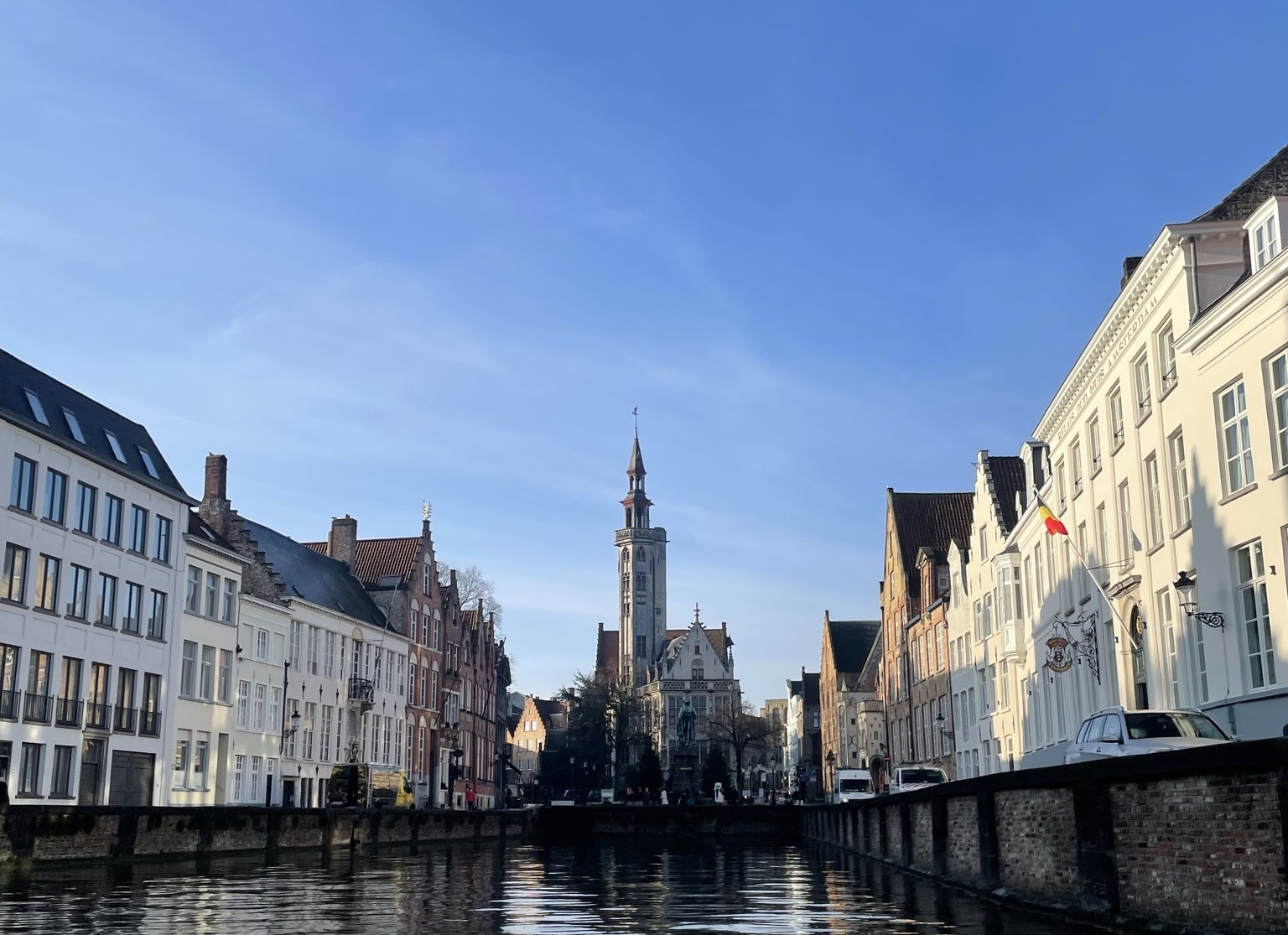 Jan van Eyckplein from the canals, Brugge
Jan van Eyckplein from the canals, Brugge
Brugge also flourished as a trading town in the Middle Ages, and the Poortersloge in the background is a witness to the prosperity of the time. Today, the town centre mainly caters to tourists, but the medieval structures are still well preserved. I found the concentration of churches particularly impressive, with the parish offering a total of 16 services at 10 different venues for Christmas Eve and Christmas day.
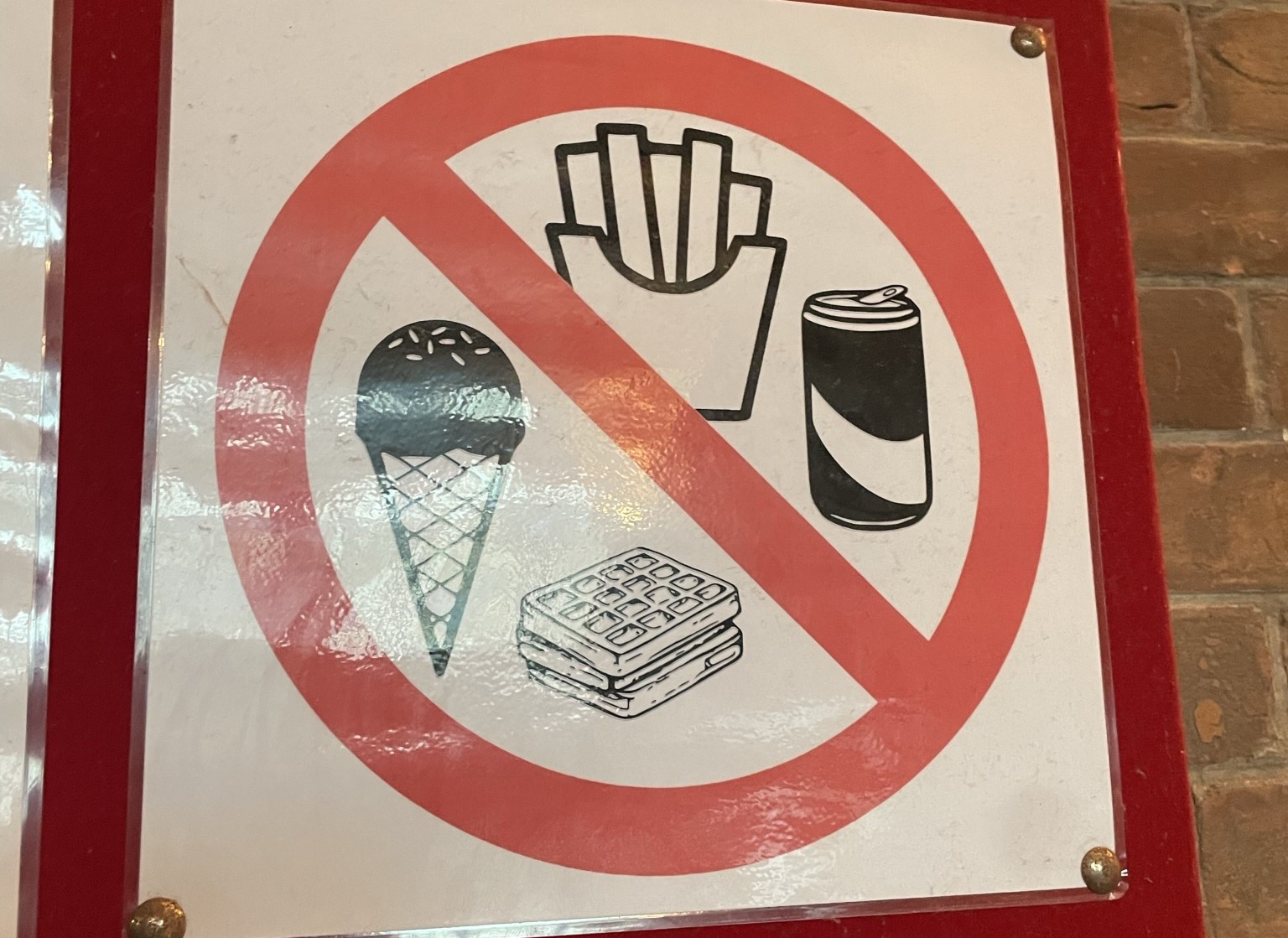 Sign at Basiliek van het Heilig Bloed, Brugge
Sign at Basiliek van het Heilig Bloed, Brugge
The major food groups of Belgium.
Click to expand (warning: NSFW)
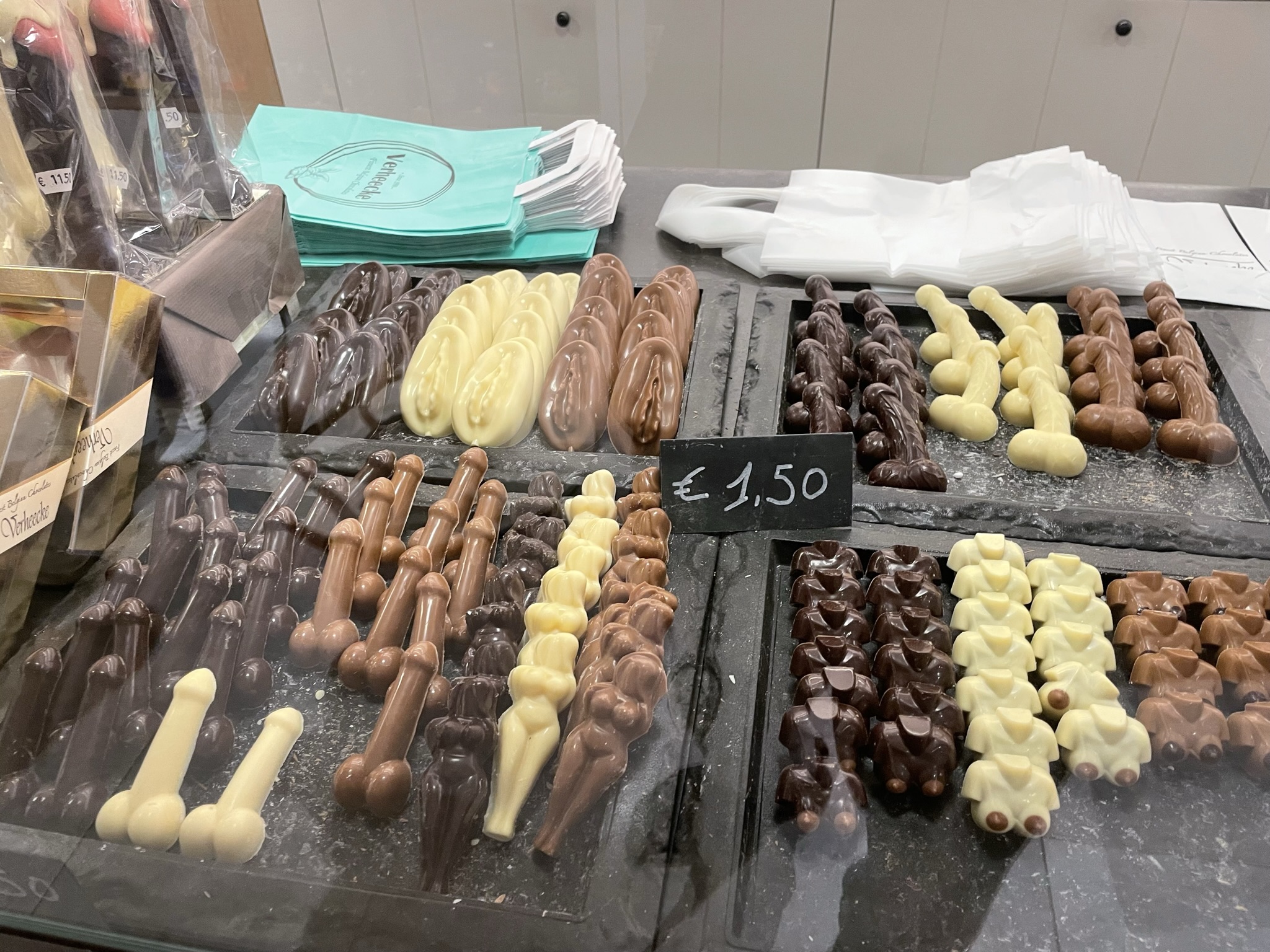 Self-explanatory, Brugge
Self-explanatory, Brugge
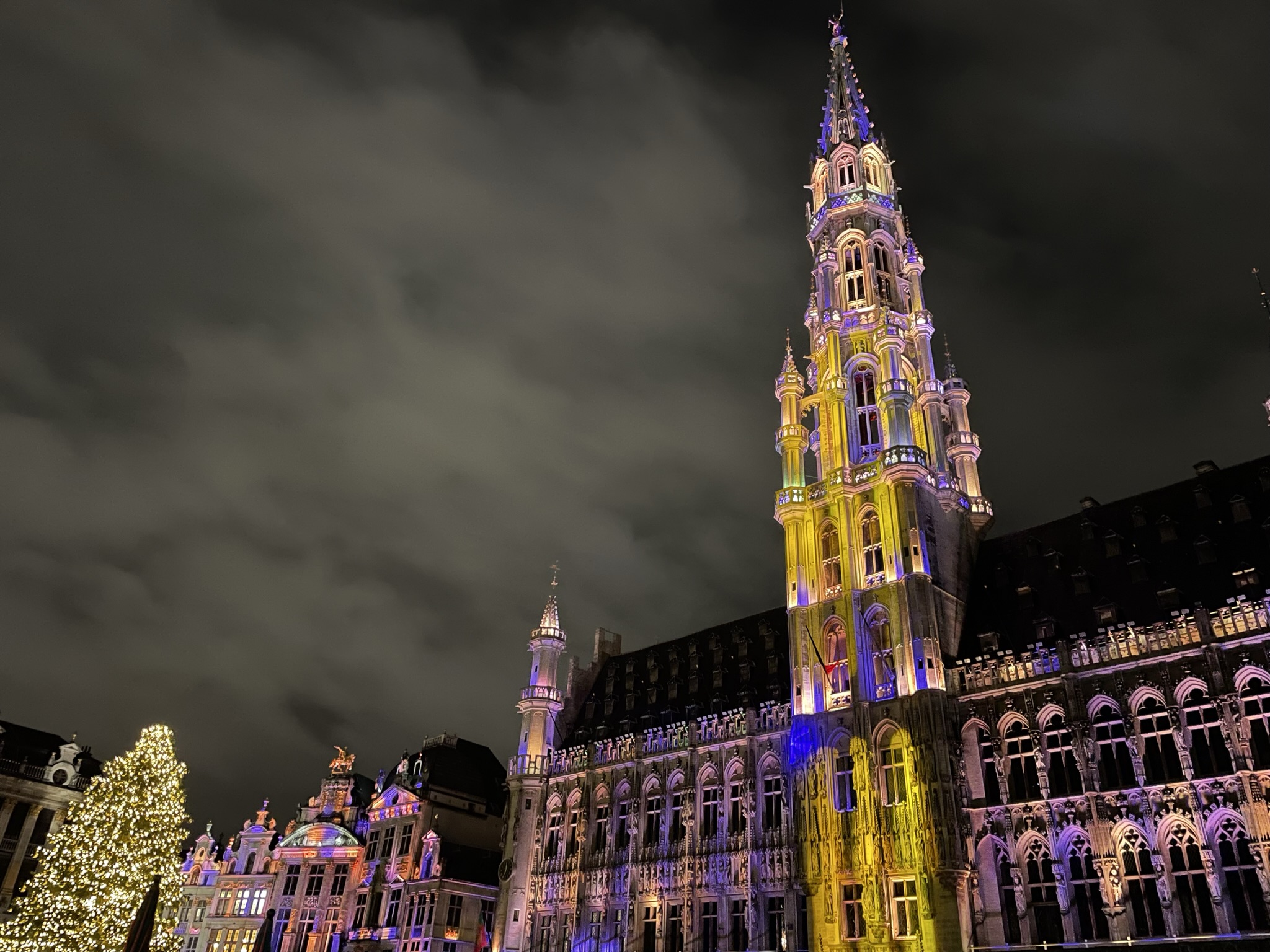 Light show at the Grand Place, Brussels
Light show at the Grand Place, Brussels
Ornate Gothic and Baroque structures line all sides of Brussels’ “Big Square.” During the holiday season, a light and music show runs every hour or so. The classical architecture serves as a backdrop for the modern and colourful lights, and a giant Christmas tree sits in the middle. The crowd is noticeably more diverse here, a testament to the city’s status as a global city and the capital of Europe.
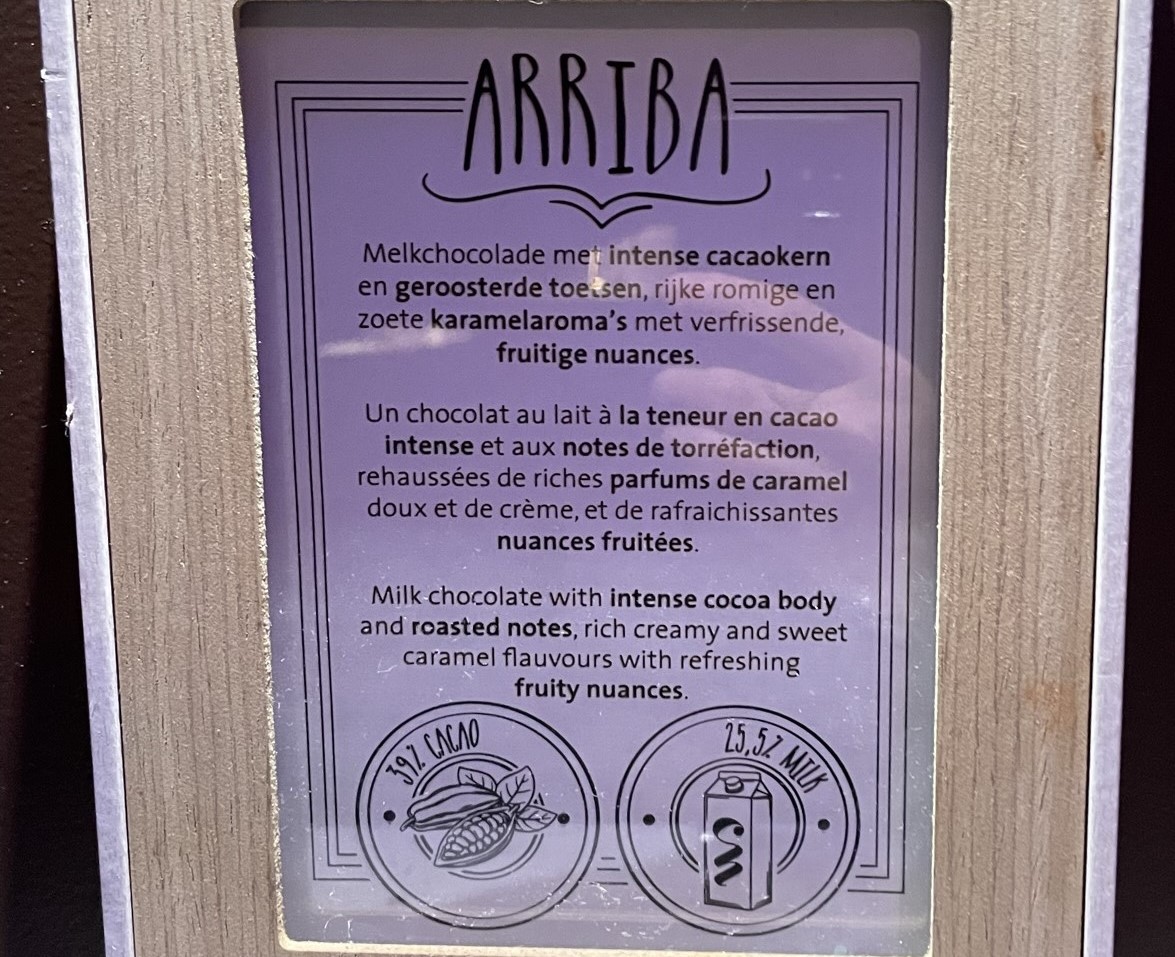 Chocolate varieties at Chocolate Nation, Antwerpen
Chocolate varieties at Chocolate Nation, Antwerpen
Tasting notes for chocolate as colourful as one would write for wines. Now that’s how you know the Belgians take their chocolate seriously.
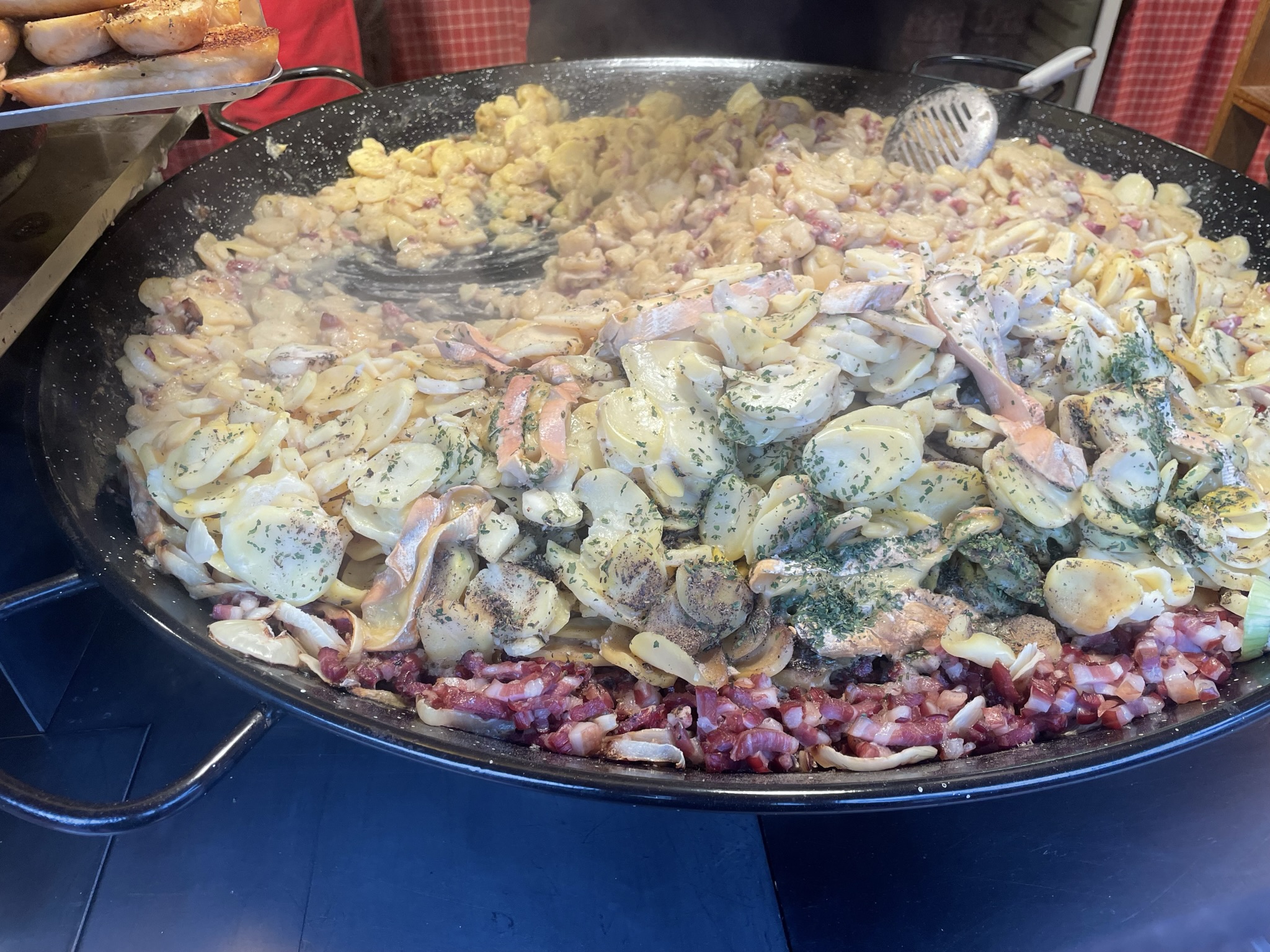 Tartiflette at the Christmas market, Namur
Tartiflette at the Christmas market, Namur
A heavy and hearty dish, tartiflette is usually presented in a more reasonably sized cookware, but the huge pot at this stall with all the ingredients on display filled the air with its aromas as I walked past, which made it hard to resist. It was also raining quite a bit that day, and this bowl of warm potatoes with cured meat and cheese hit just the spot.
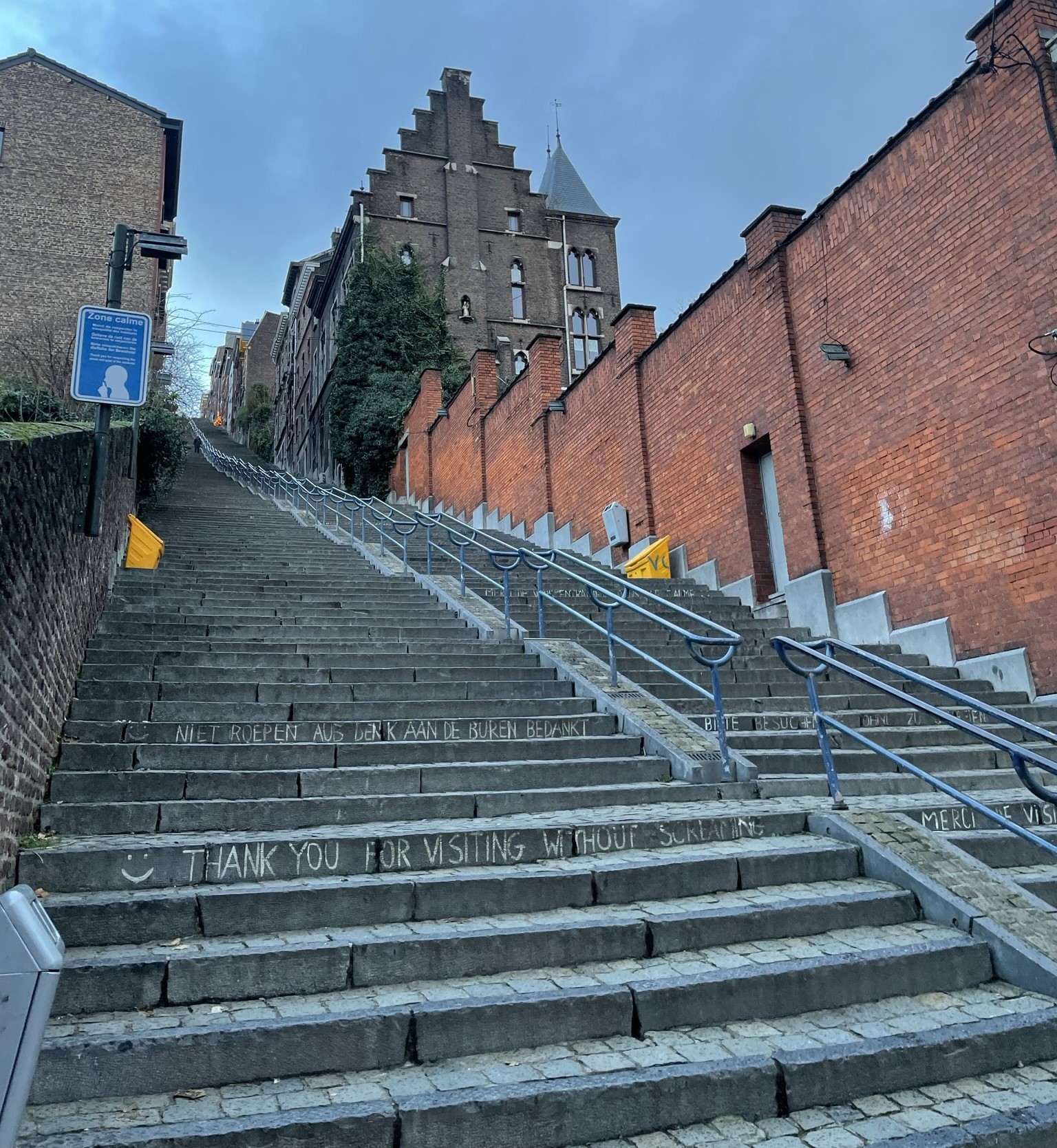 Montagne de Bueren, Liège
Montagne de Bueren, Liège
374 steps line a path to the top of the city, which works out to going up about twenty floors of a building. Although many belfry towers have you climbing the same amount, what makes these steps particularly impressive is that they form a straight path without any twists and turns. It becomes apparent how much you have ascended as you climb. Residential units line the sides of the path, with many signs ask visitors not to scream; it must have been bothersome in the past!
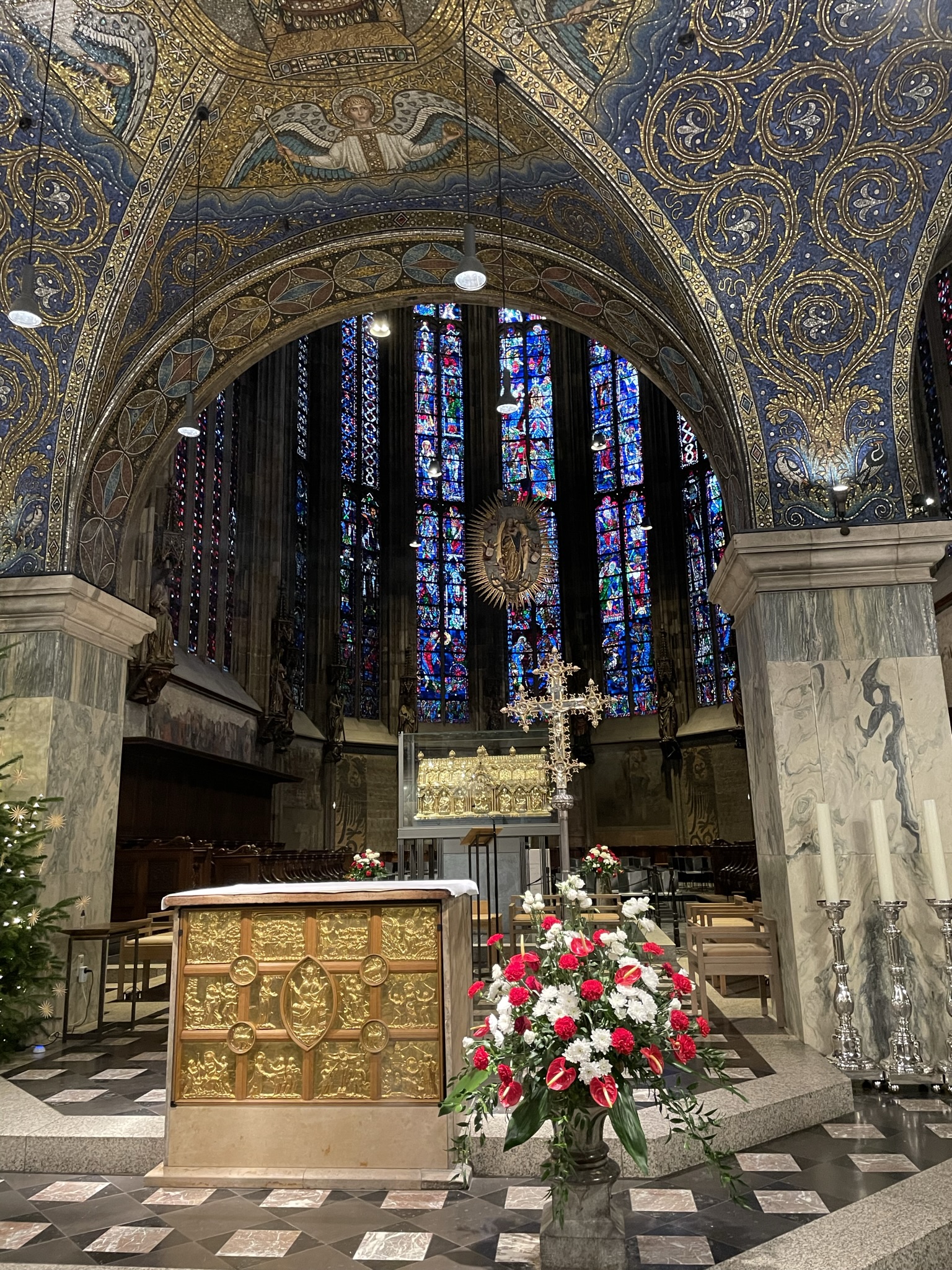 Aachen Dom, Aachen
Aachen Dom, Aachen
I had not realized the historical stature of Aachen until I arrived here, a 20-minute train ride from Belgium. This city was the seat of Charlemagne’s reign and subsequently the Holy Roman Empire for over five centuries, which included much of present day Germany, Italy, Czechia, and Austria. This cathedral itself dates back to the 9th century, the Carolingian art style, with heavy use of gold and mosaics, is noticeably different from the Gothic style of the other major cathedrals in Europe. Today the city has expanded significantly beyond the original city walls, sections of which are preserved, but is otherwise a typical German city.
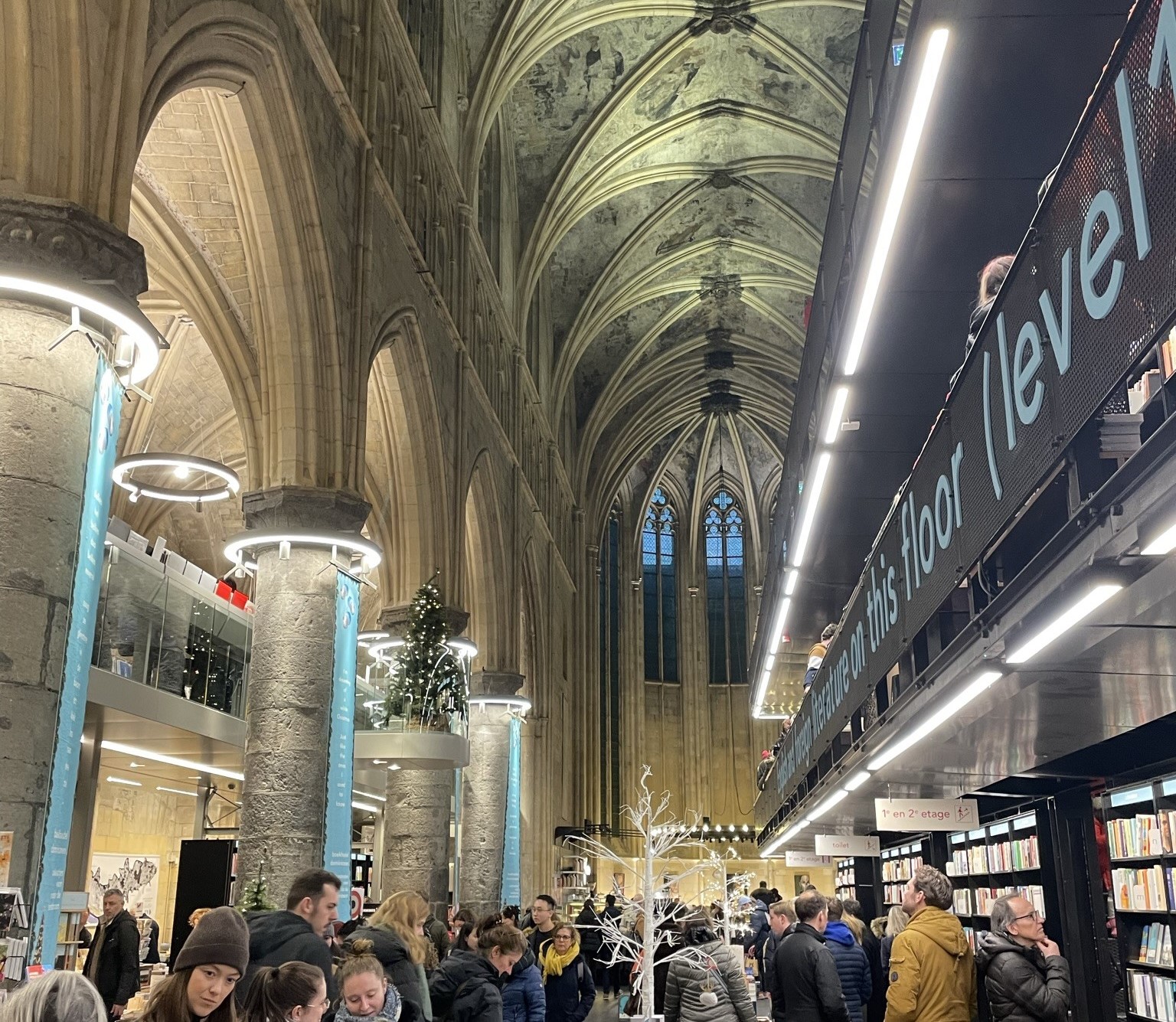
A very unique bookstore converted from a Dominican church. It was quite crowded when I visited, and there was even a local children’s choir performing. Bumping shoulders with strangers next to stacked bookshelves did not feel much different from a local bookstore, but looking above, the vaults, columns, and open space certainly remind you of the past of this structure.
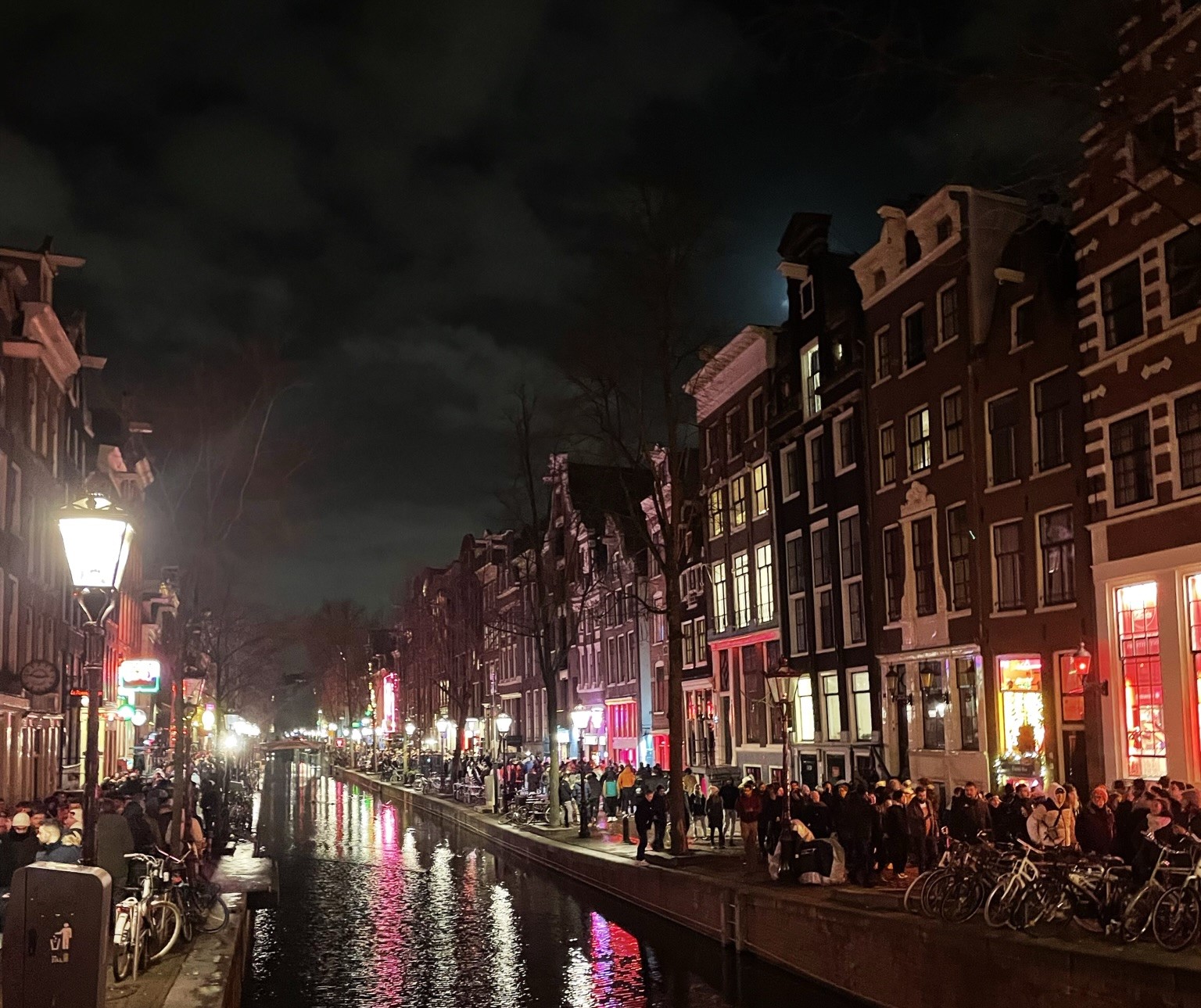
Amsterdam is known for its picturesque canals, dating back to the Dutch Golden Age when Amsterdam flourished as a global port city. The red light district was born with sailors seeking recreation, and is alive and well to this day. Along with the rampant availability of recreational drugs at “coffeeshops,” Amsterdam has gained a reputation as a “sin city.” My first night around town came as a culture shock with marijuana smoke puffed around every corner, but I came to appreciate the pleasure-seeking and free-spirited character of this city.
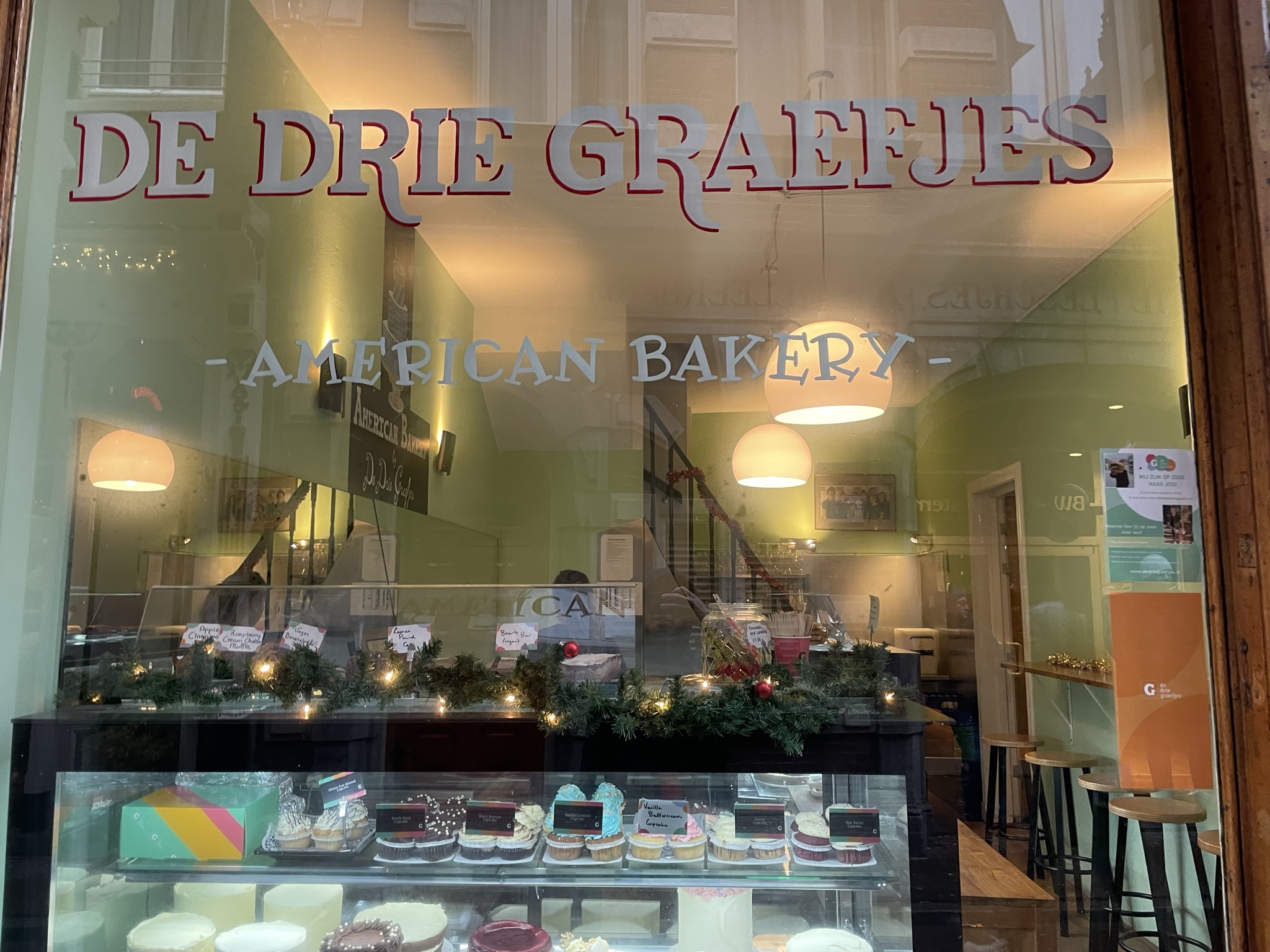
American bakery=muffins, cupcakes, pies, and cookies. Not inaccurate I would say.
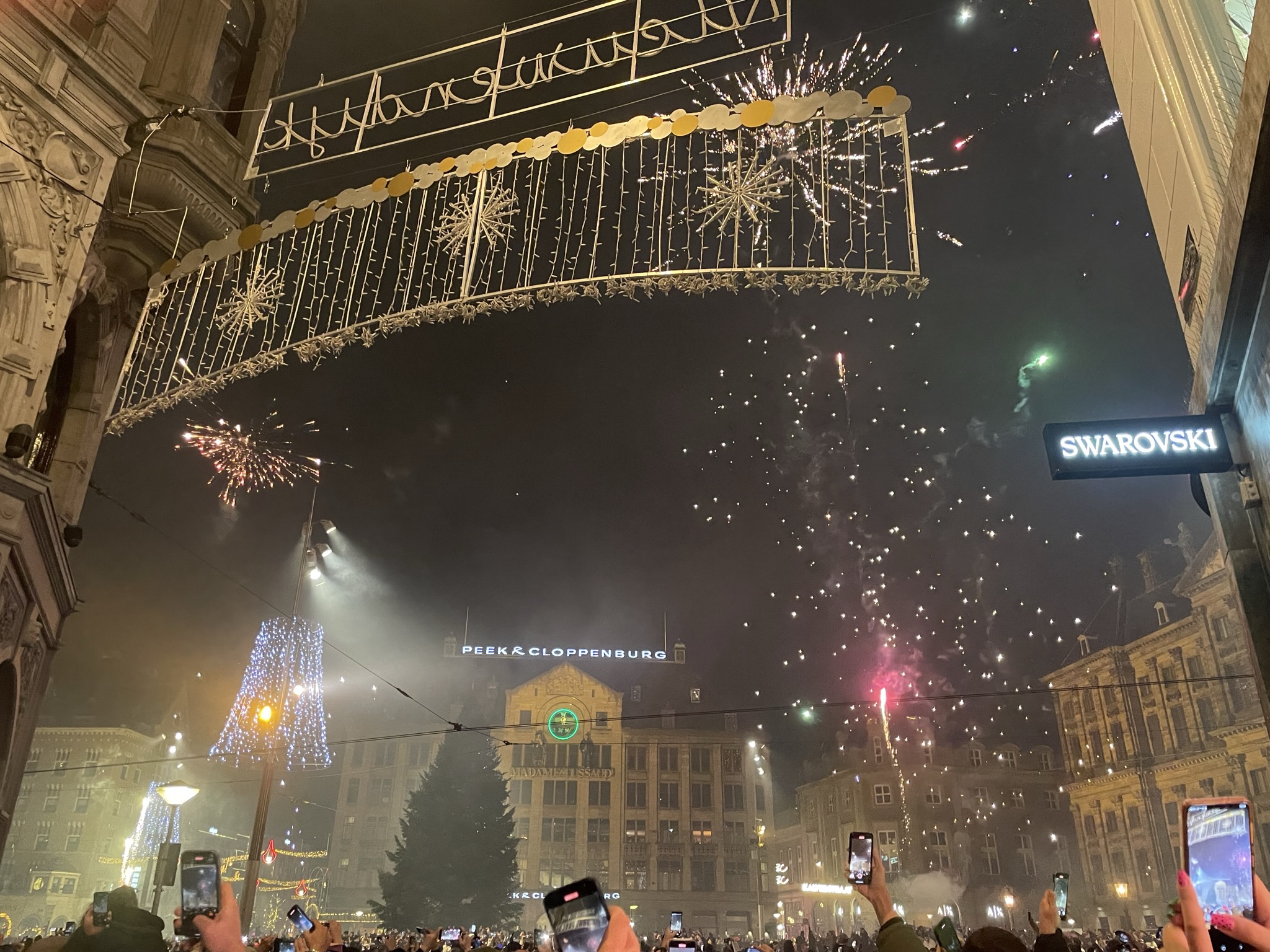
In between Amsterdam’s canals are many squares, where the people have gathered over the years. Dam square was the original location of the namesake of the city, “Dam on the Amstel,” and is now overlooked by the royal Koninklijk Paleis and a national monument. This central location in the city was a popular place to be for New Years Eve, with fireworks shooting left and right leading up to the strike of the midnight clock. This was my first New Years in a large crowd, and joining in the countdown and sharing the joy of ringing in the new year was quite a memorable moment.
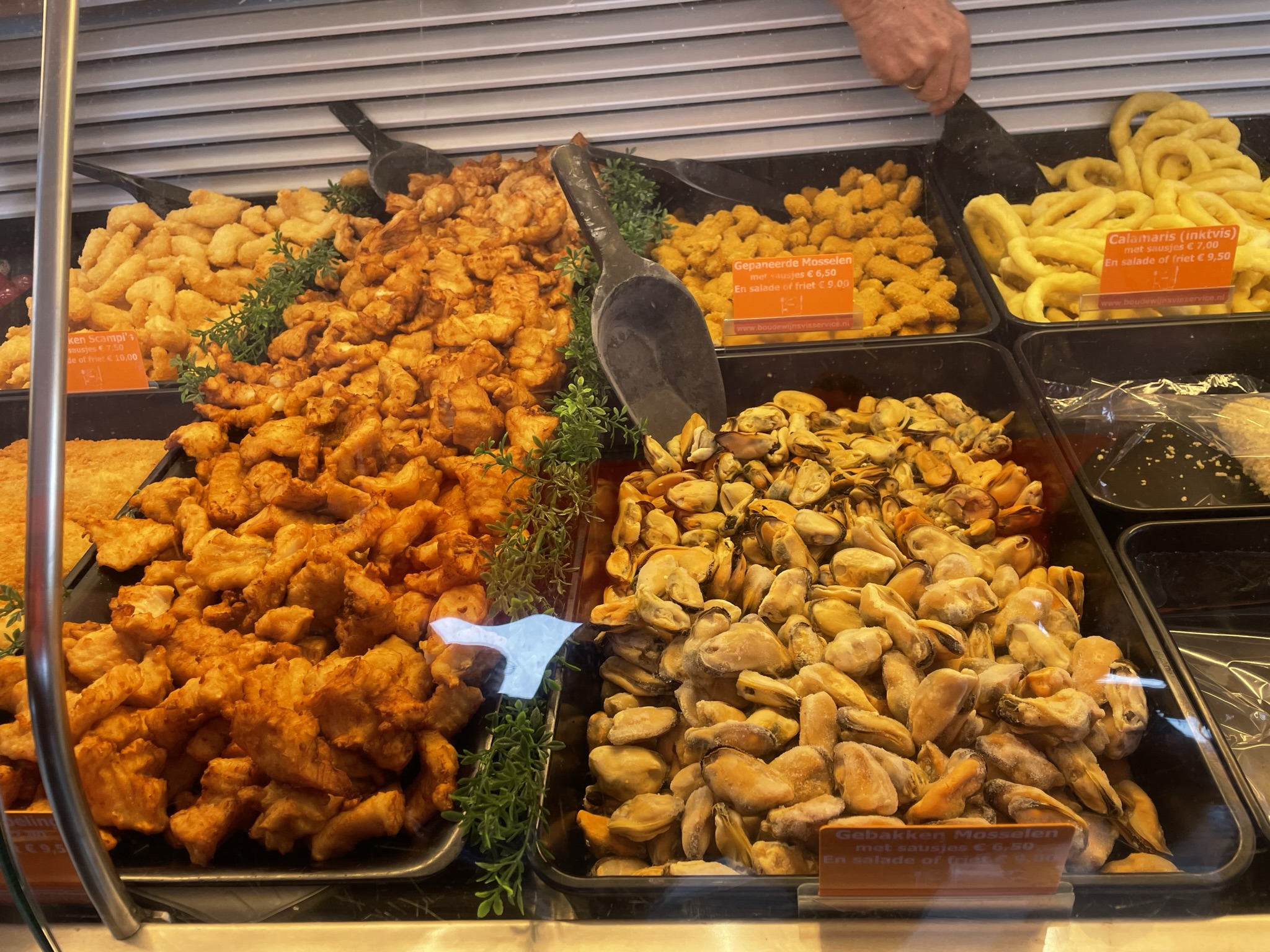
The Netherlands does not have much in way of sophisticated local cuisine, but I became very fond of these seafood vendors. They are found sometimes in markets, and other times in random food trucks around town. The pieces on display are partially fried, and then cooked to perfection when you order them. The serving is crunchy and warm, often accompanied by various sauces. While there is often a large variety of choices, the most traditional kibbeling, small chunks of battered fish, won me over with its flaky texture and mild flavor.
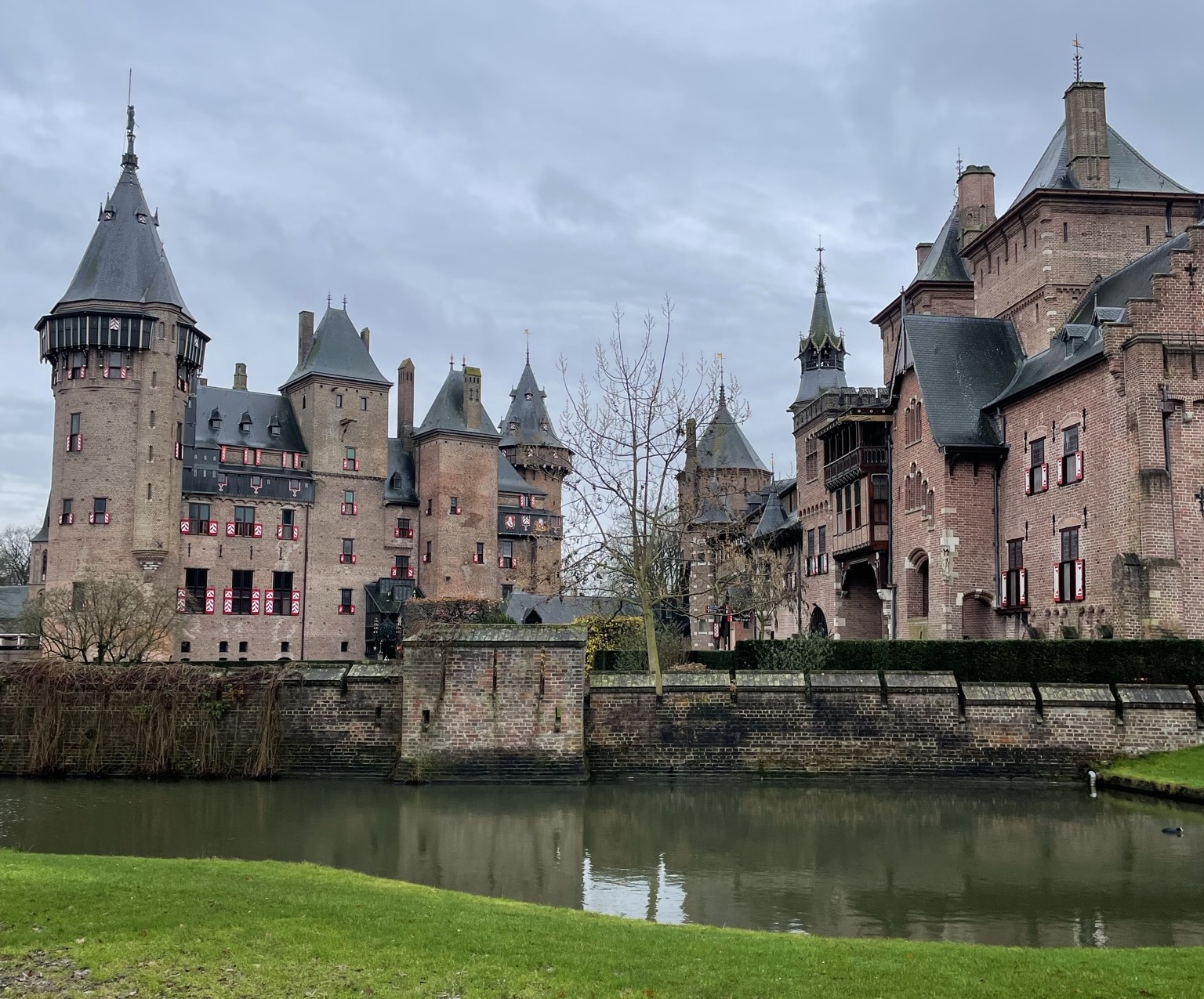
Another medieval-style castle, but this one was built much more recently, a mere hundred or so years ago. The location was somewhat difficult to access by public transportation, but seeing the stately silouette as well as the luxuriously furnished interior was worth the trek. The family that owned the structure received esteemed guests here from around the world for many years. The castle is now owned by a foundation and is frequently rented for weddings according to the staff.
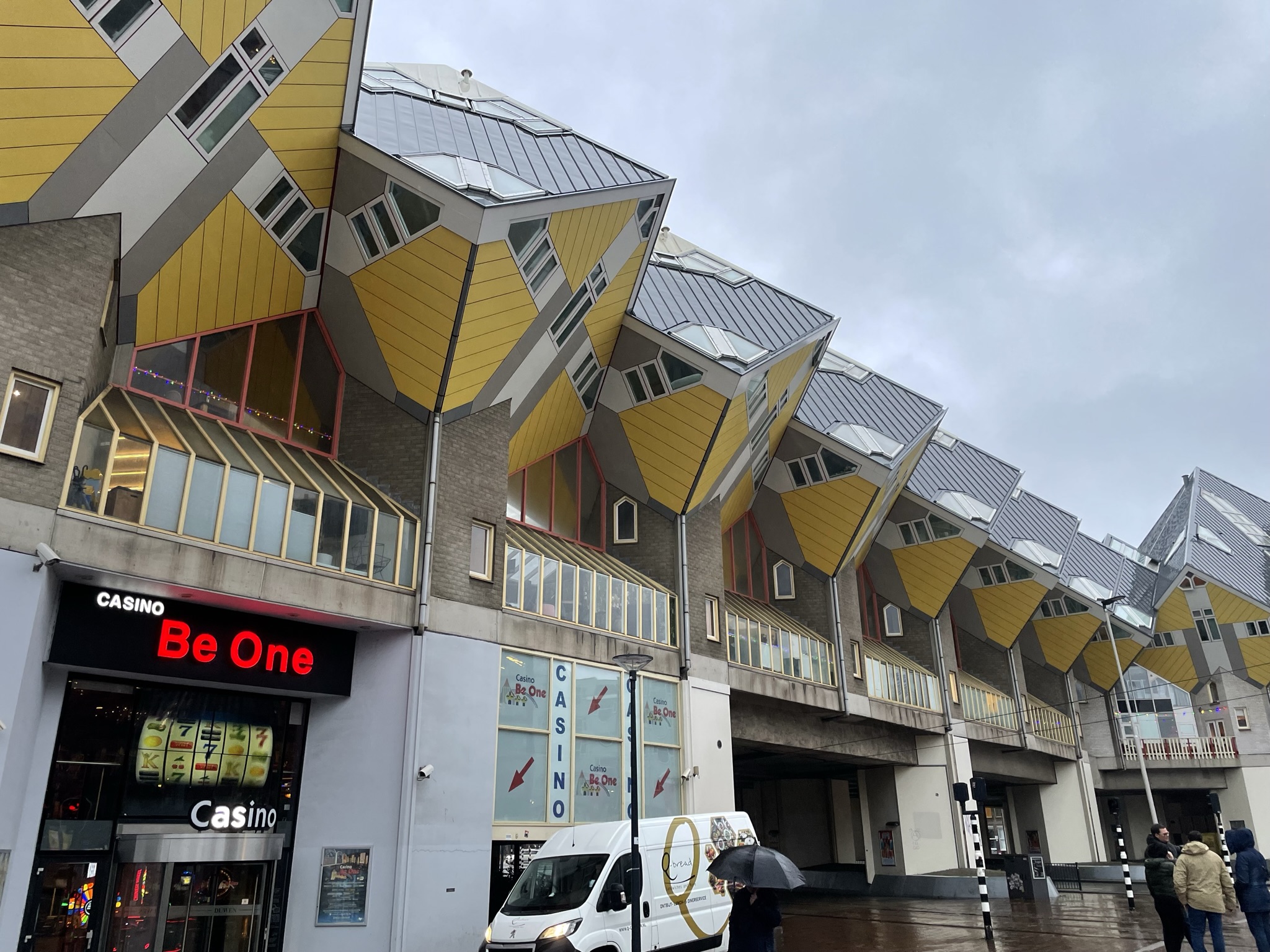
Rotterdam was also a bustling port during the Dutch Golden Age, but was heavily bombed during the Second World War. The city has since rebuilt as a modern metropolitan city, with its skyline dominated by skyscrapers, suspension bridges, and contemporary architecture. These cube houses are one example of the unique structures in the city, designed to optimize use of space and enable high-density urban housing. My hostel was inside these cubes, and the slanted ceilings gave a spacious feel to the rooms.
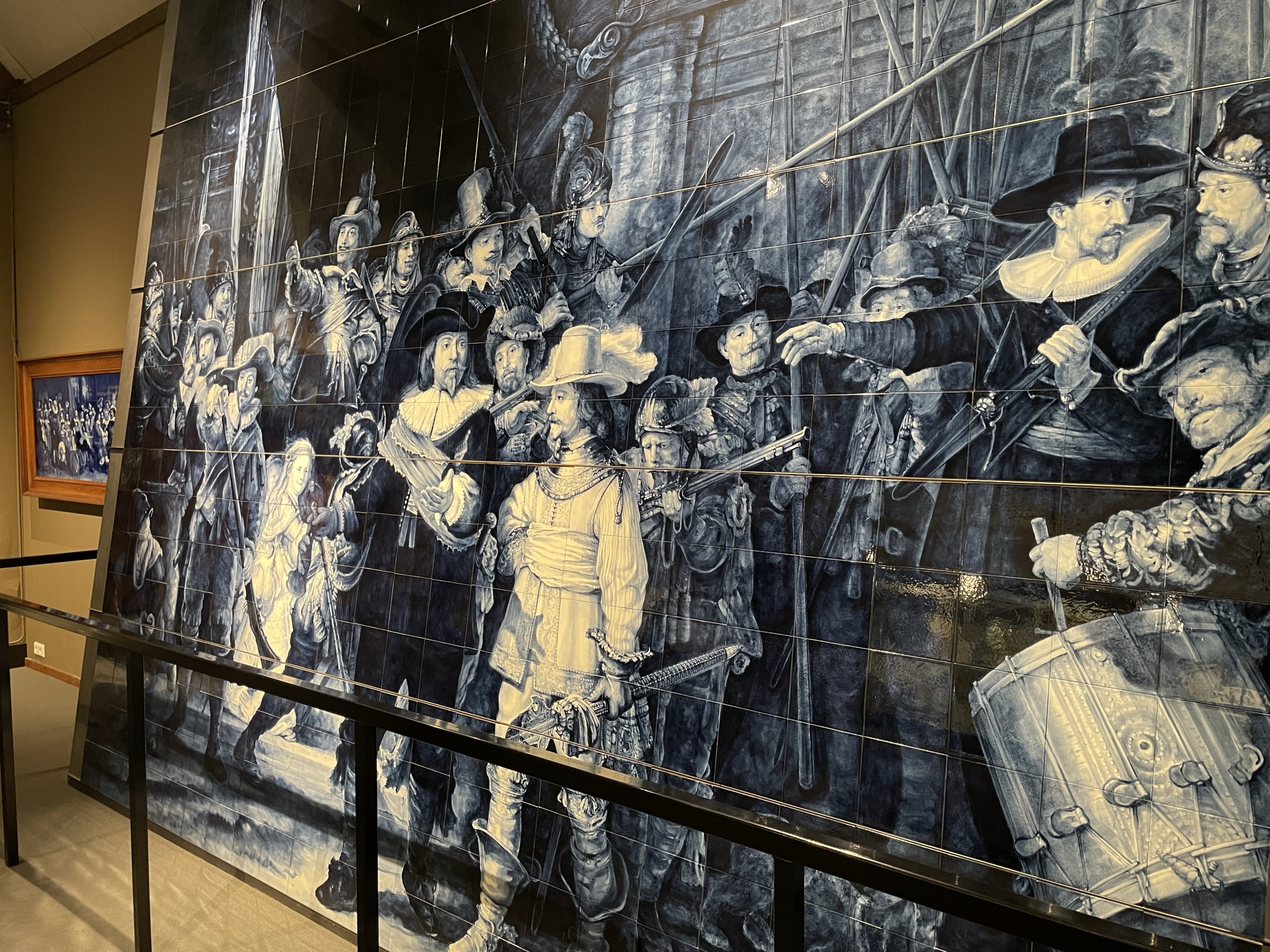
The Night Watch painted by Rembrandt and Delft blueware are probably two of the most recognizable elements of Dutch art. The two coming together in this collage was the highlight of the Royal Delft Museum for me. I was particularly impressed by how such a faithful reproduction of the original painting was possible on fired pottery, from the fine details that bring the characters to life to the various shades that give the painting its depth.
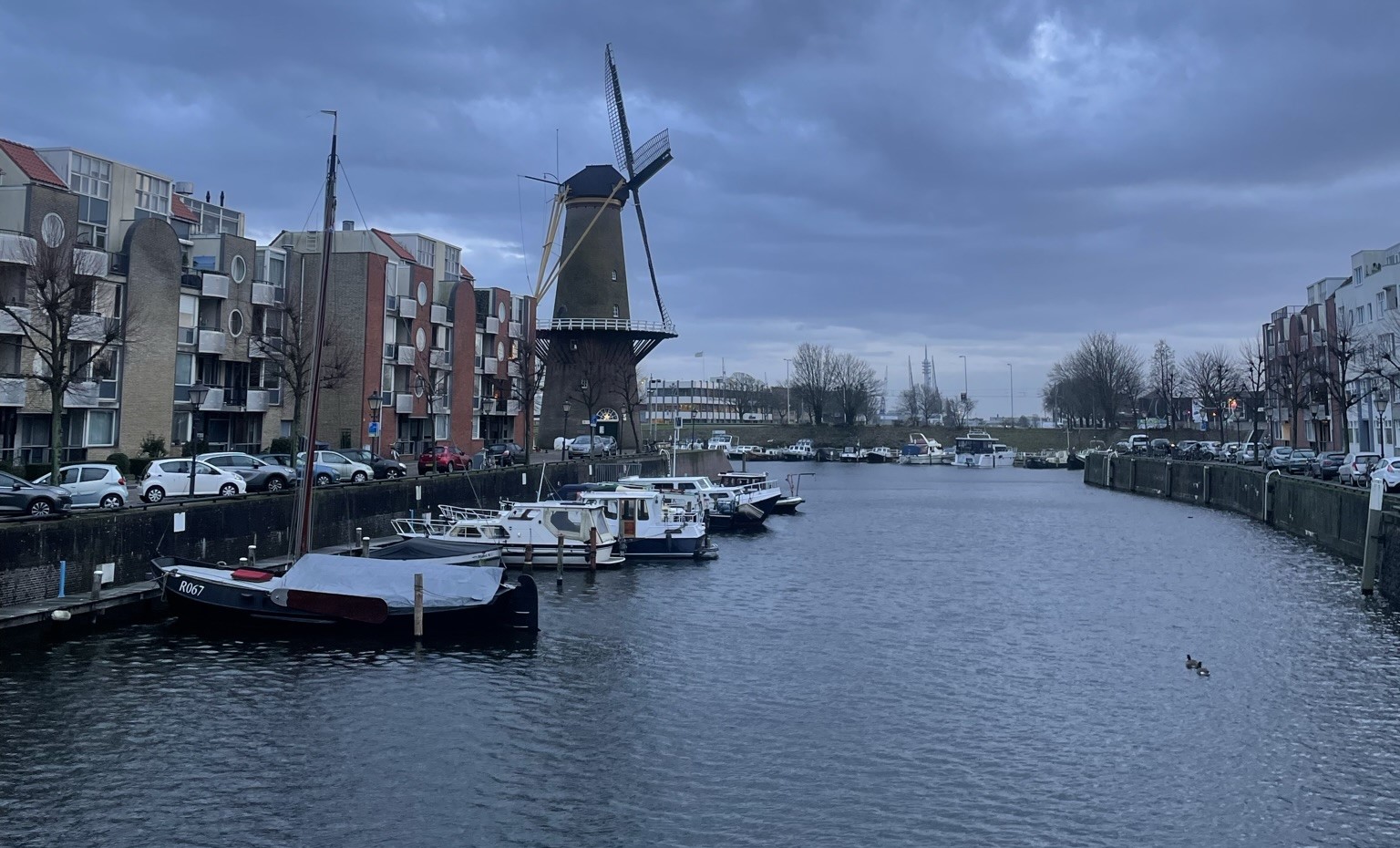
Now a borough West of central Rotterdam, Delfshaven was historically owned by the city of Delft, and its name literally means “port of Delft.” The historical centre has been carefully preserved. Under the watch of the iconic Dutch windmill, I couldn’t help to think of how the many boats lining the harbour are but a fraction of those that have come and gone over the centuries, and the development of these cities by the water is certainly a beneficiary of these exchanges.
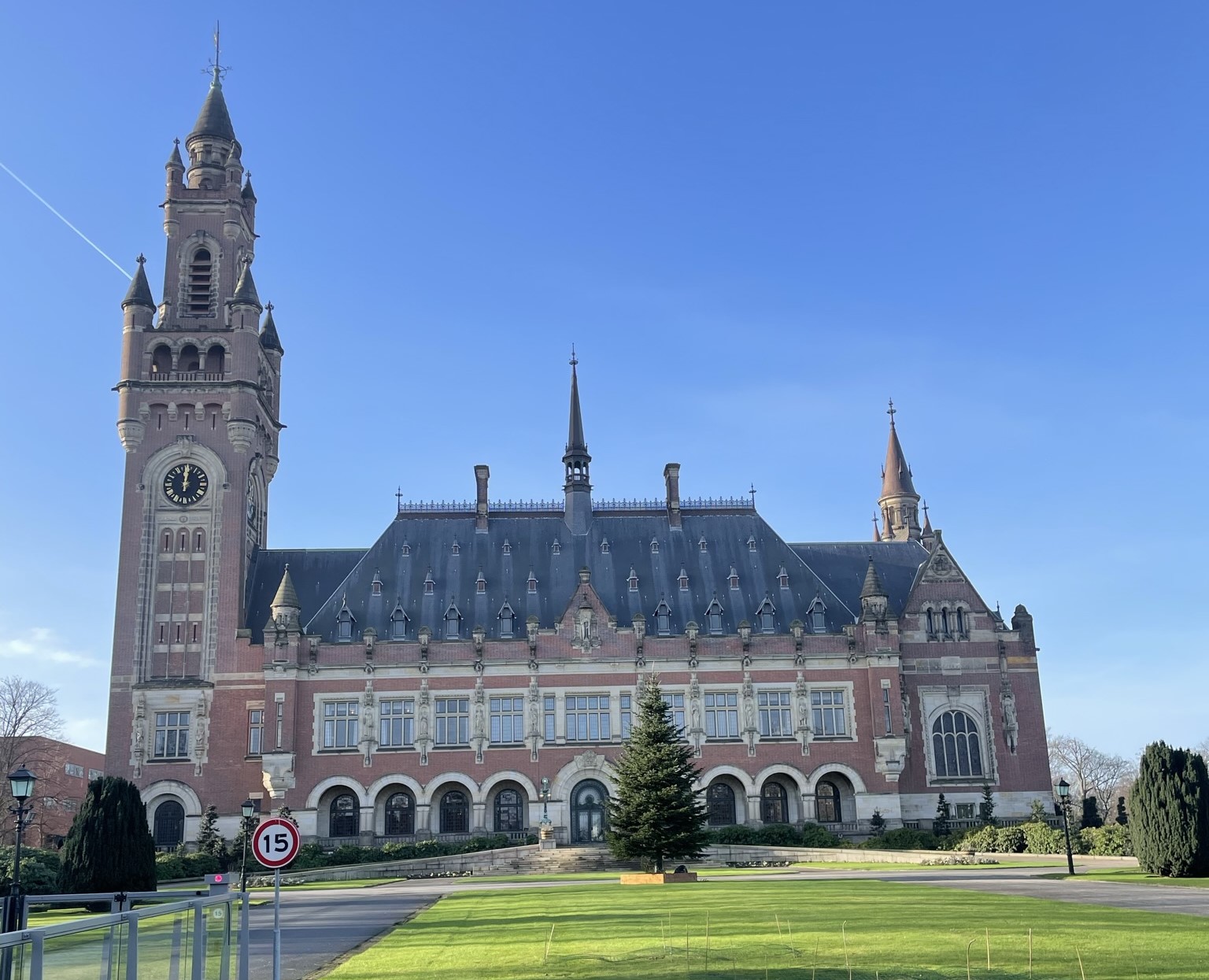
The Peace Palace houses the International Court of Justice, representing the noble ideal of peaceful resolutions to global conflicts. In a world still filled with war, injustice, and suffering, this certainly seems like a distant and lofty goal. Although I wasn’t able to tour the main building, the grandiose exterior still made an impression, and I do hope that this presence can be a positive step to creating a better world.
Concluding Thoughts
While the Low Countries might not be the most popular tourist destination in Europe, it certainly carries its own charm. Marks of the prosperity of the medieval times and the Dutch Golden Ages serve as a backdrop for the modernized cities, which continue to welcome new faces from around the world, as it has merchants over the centuries. As usual, I met some amazing people at the hostels along the way, and the holiday festivities everywhere made this experience all the more special.
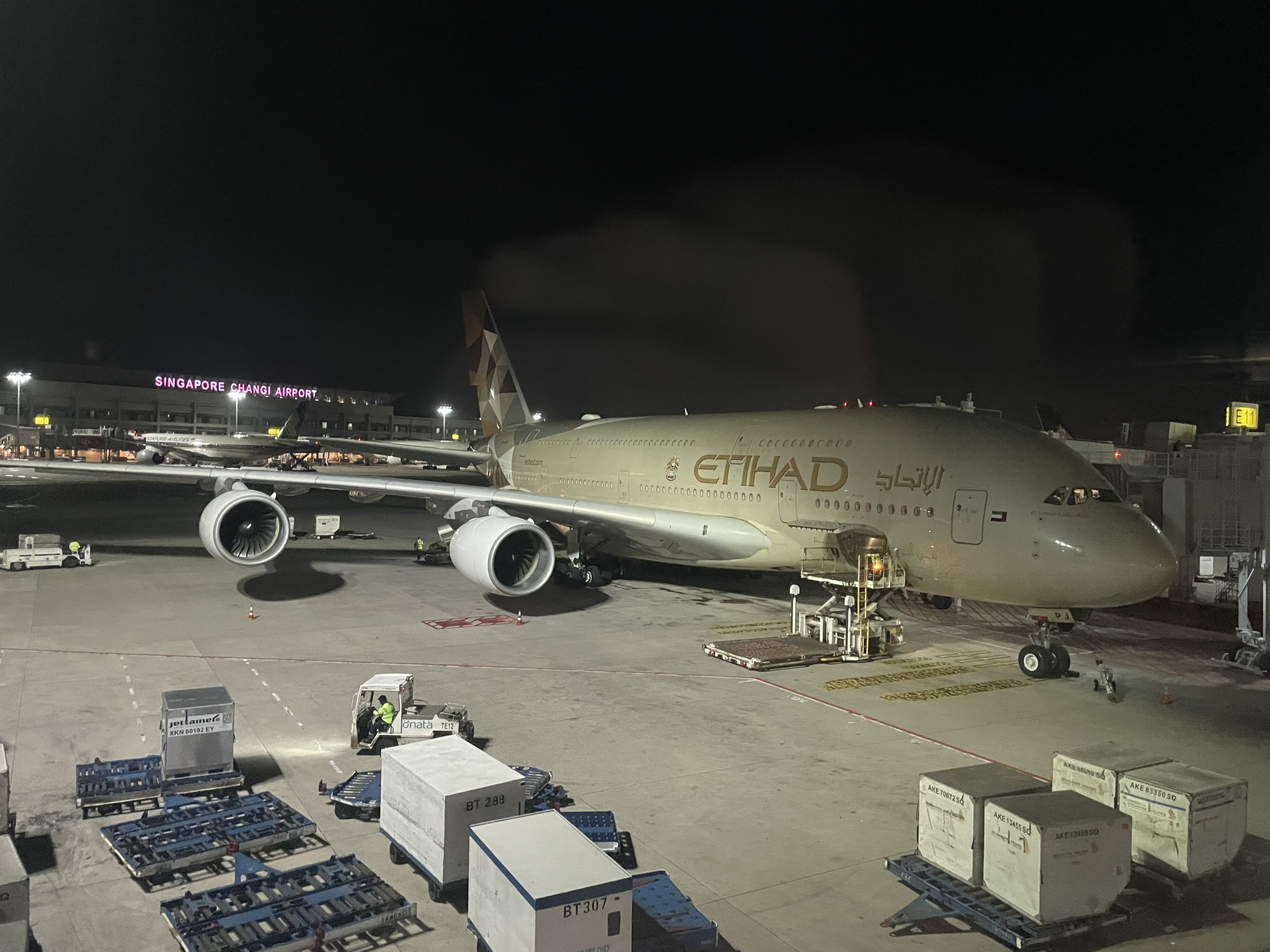
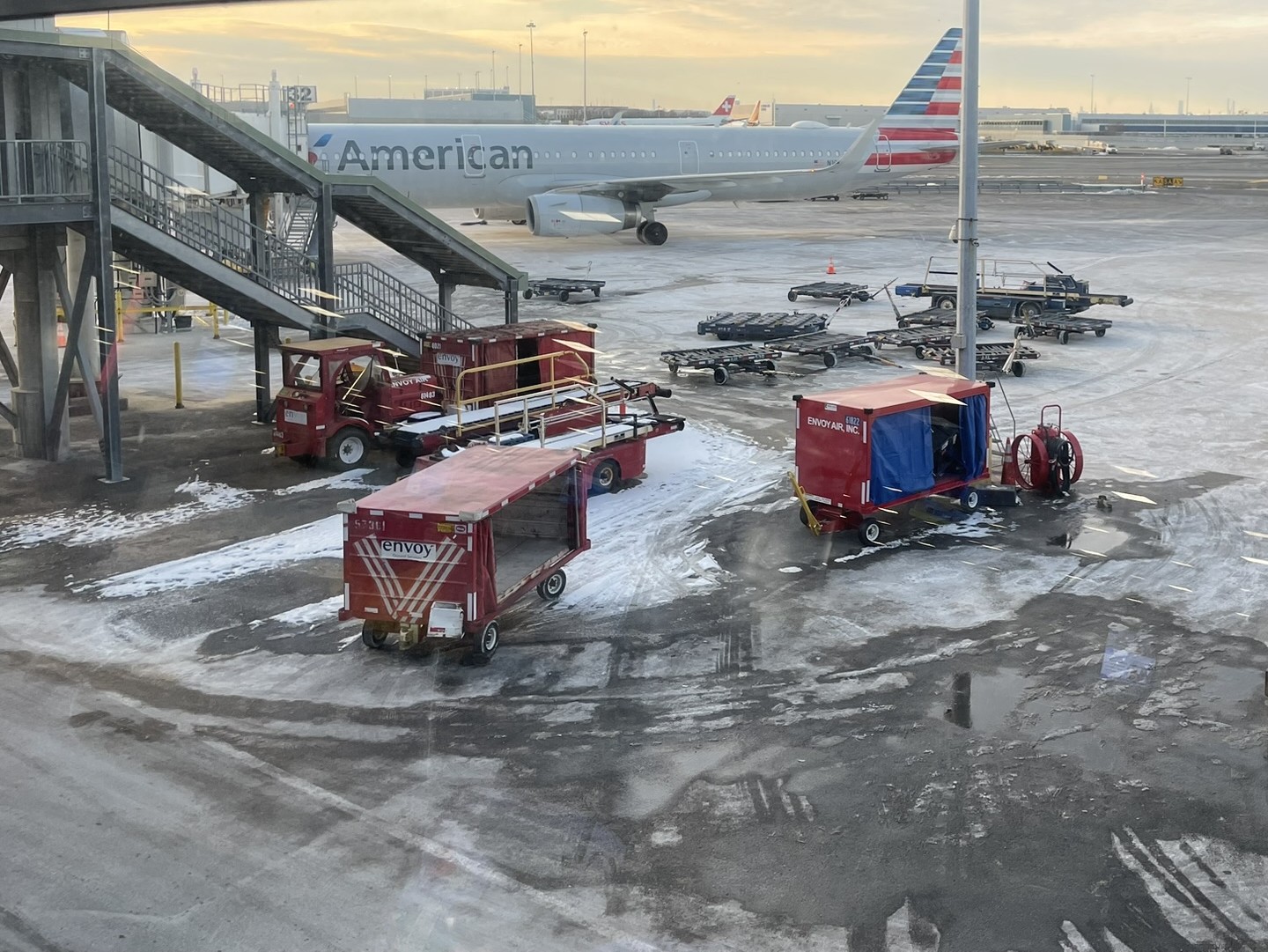
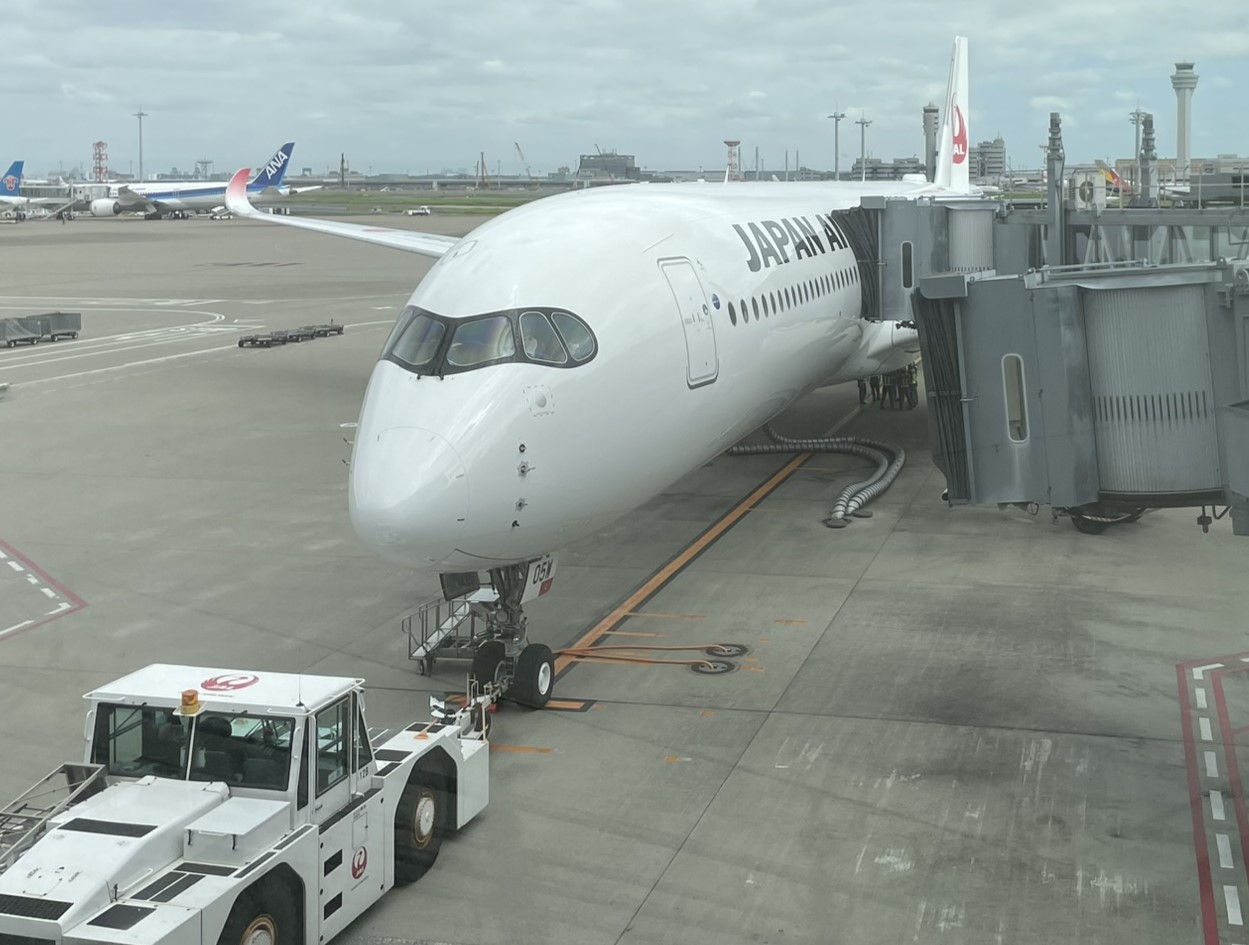
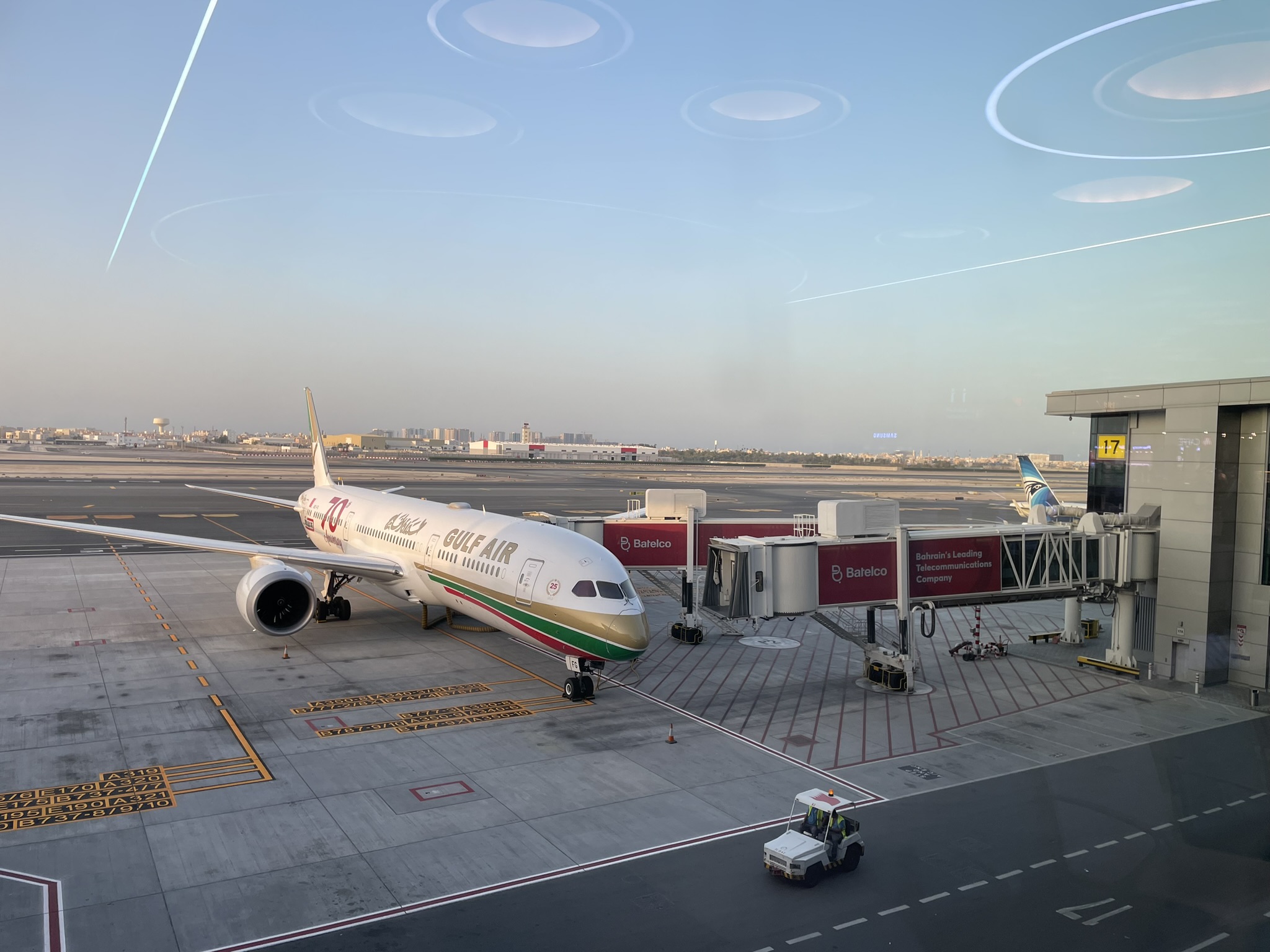
Leave a comment